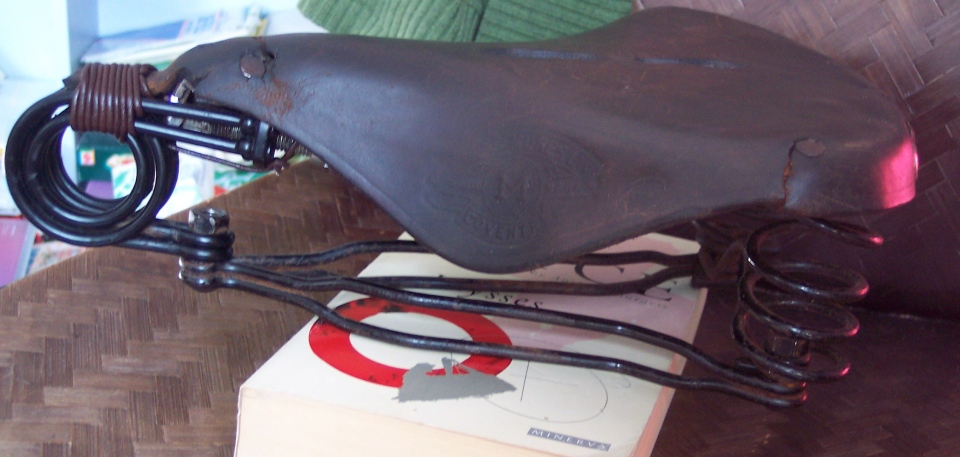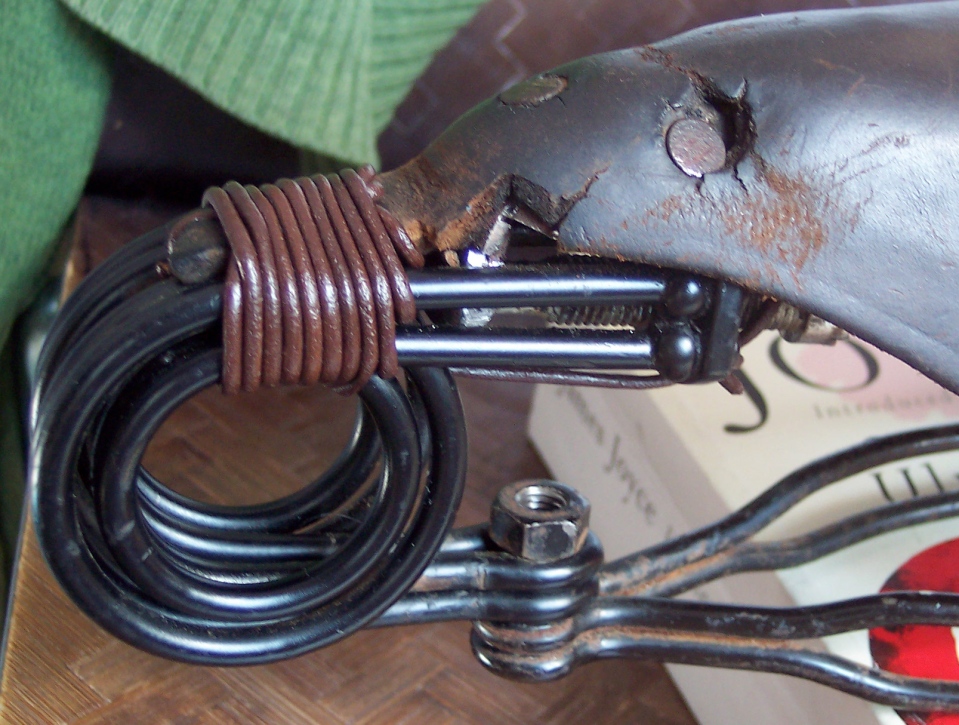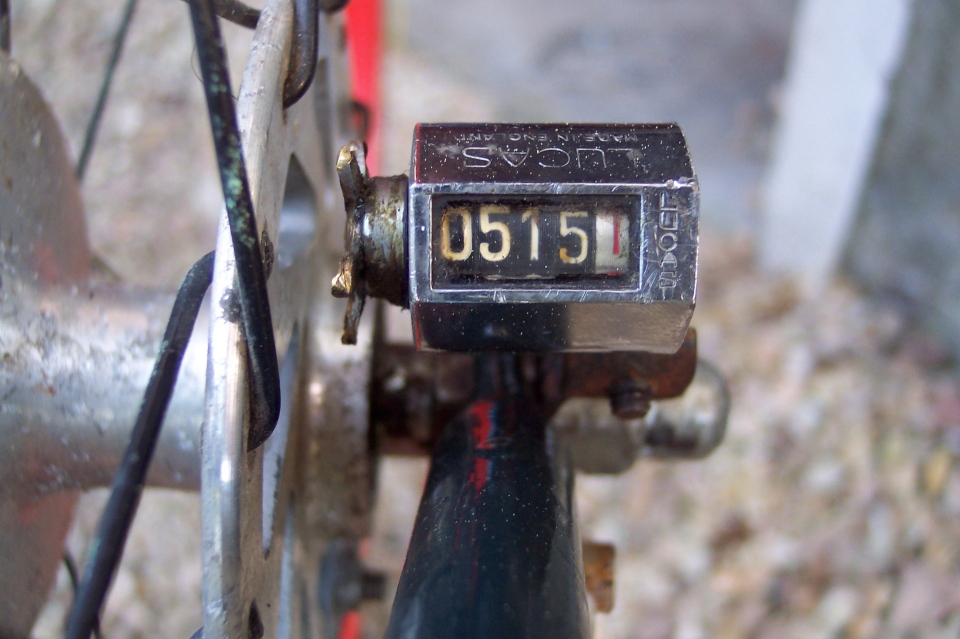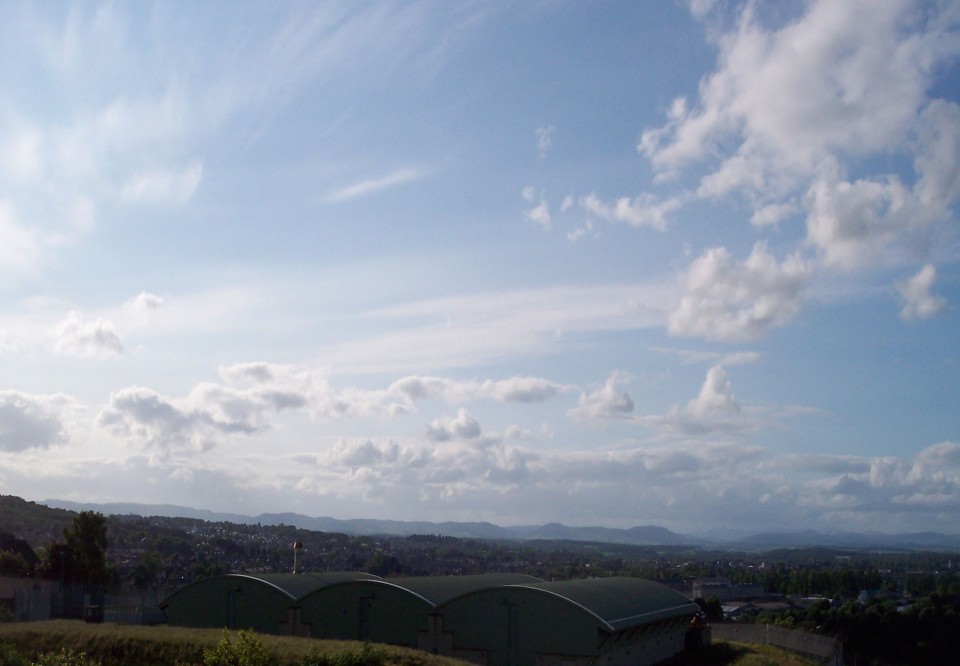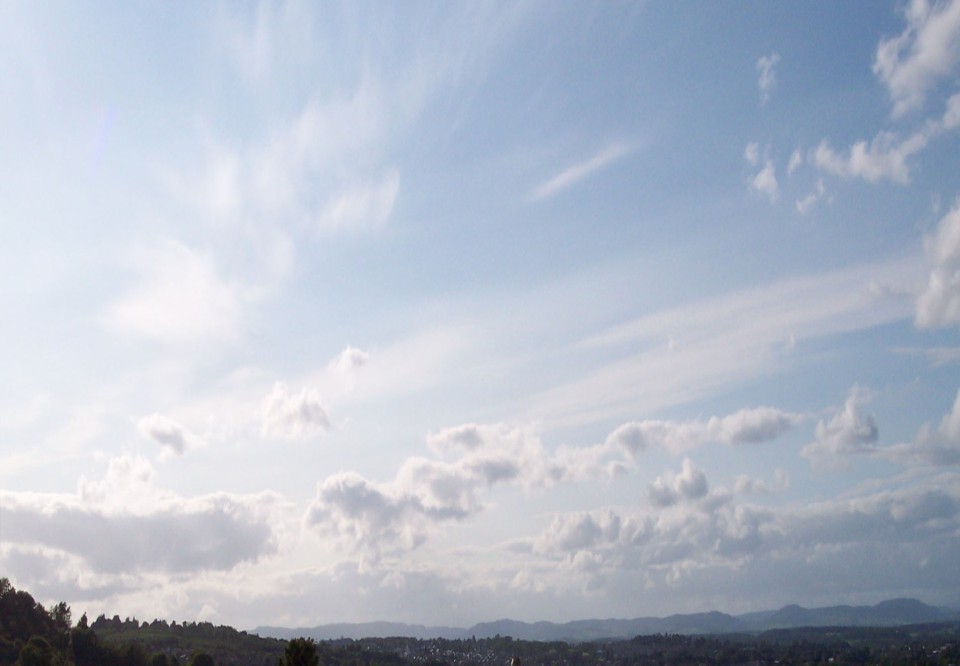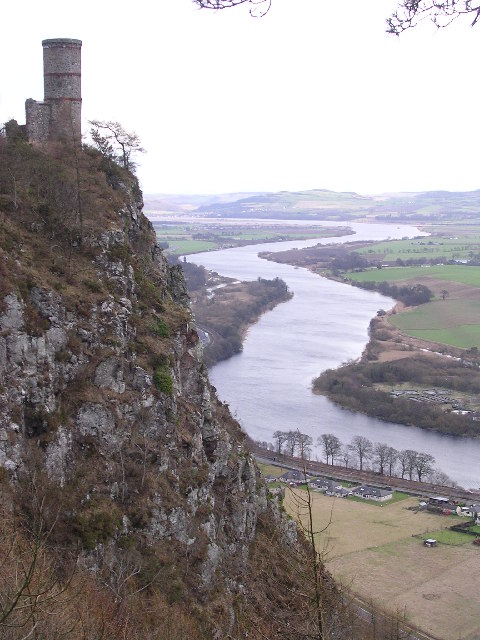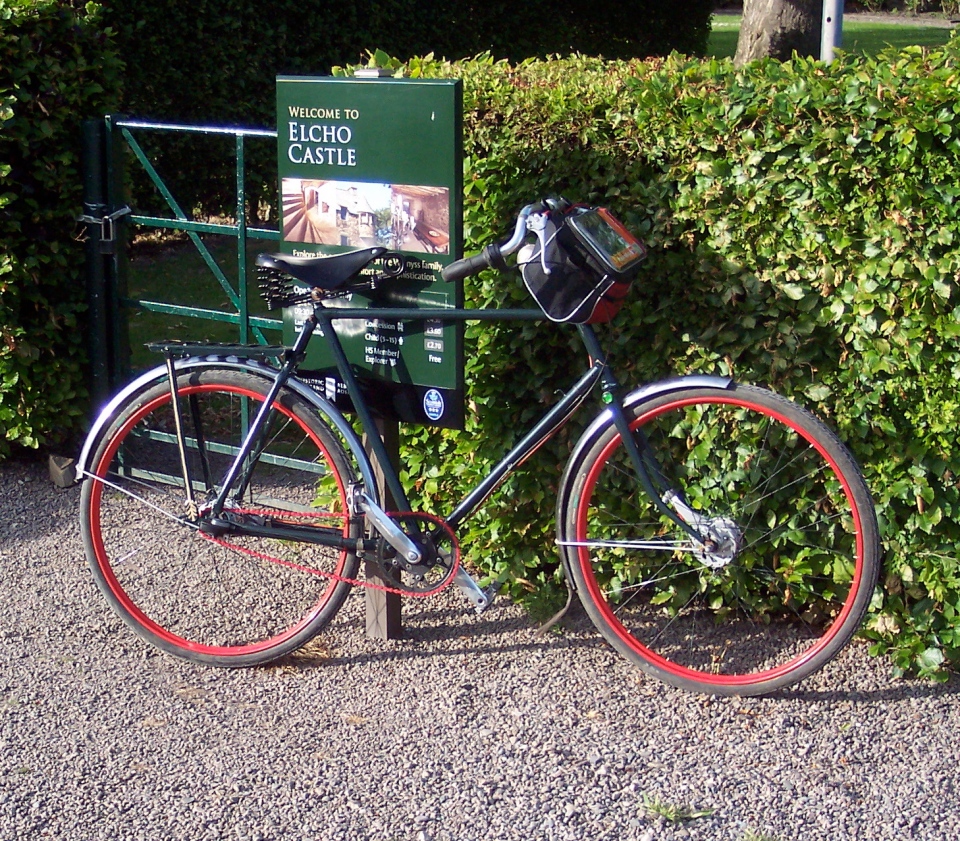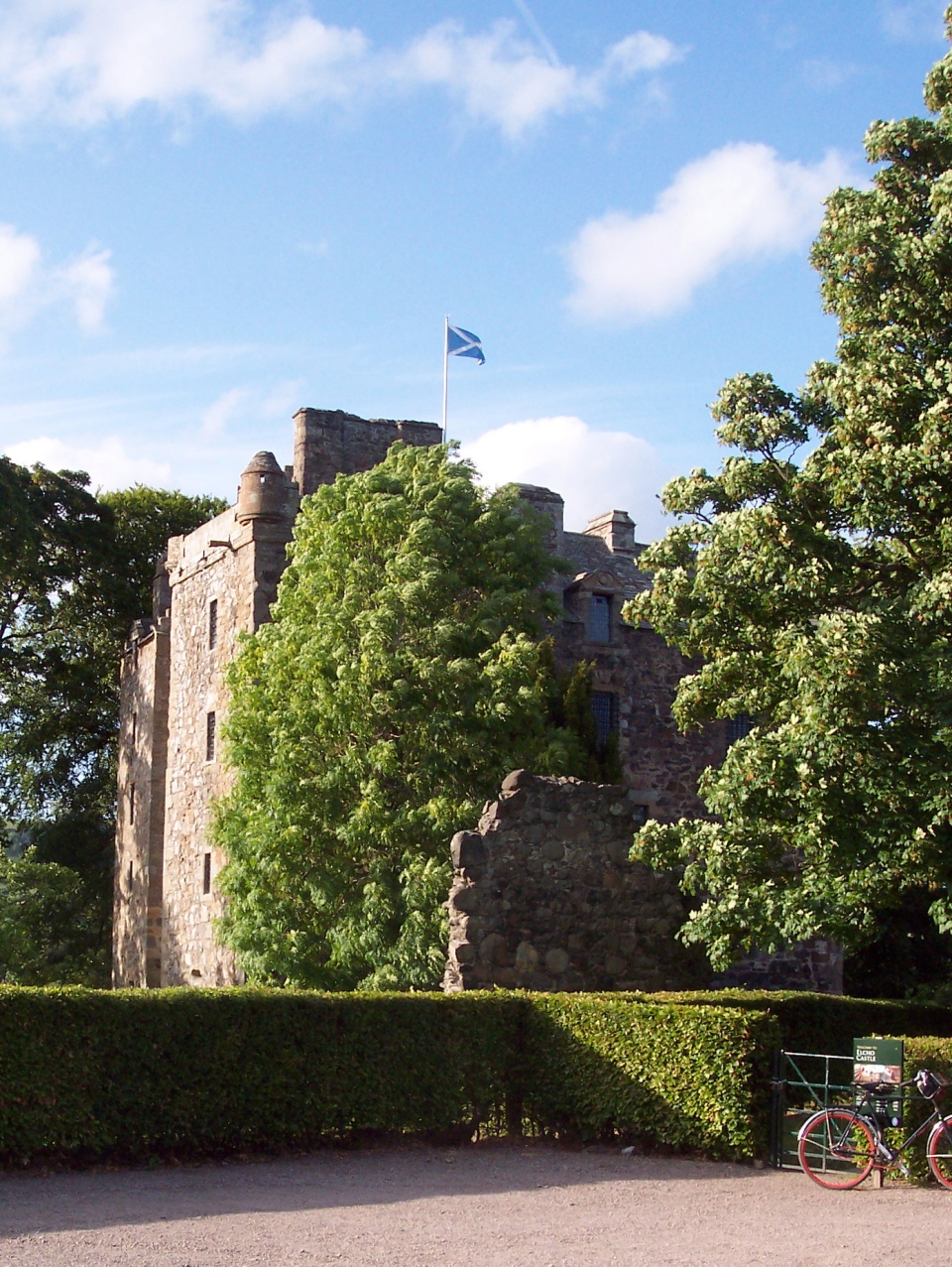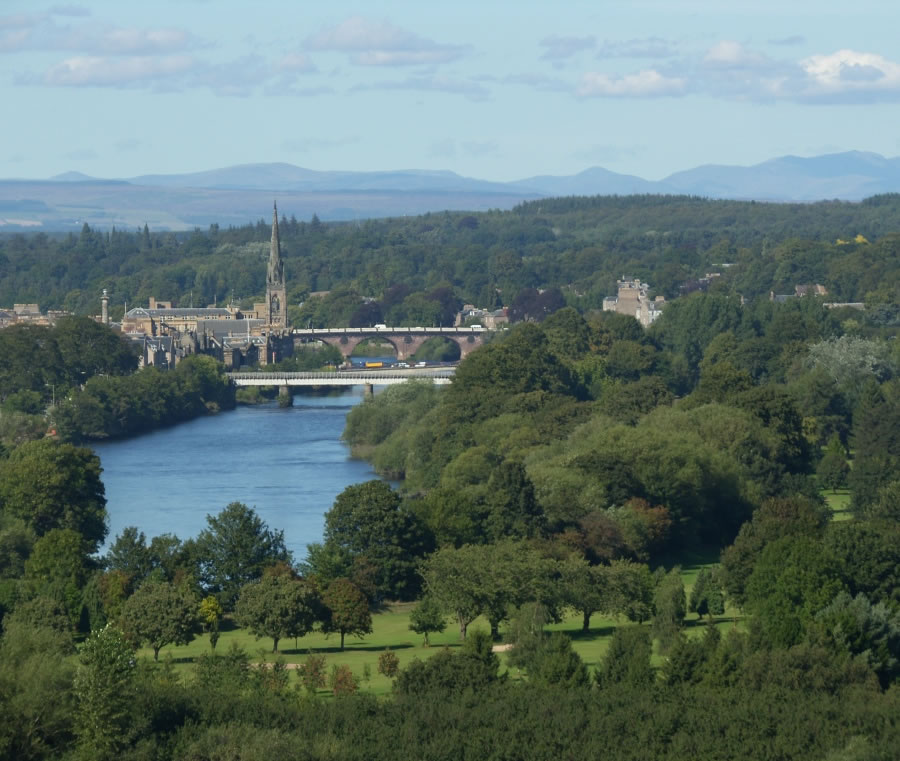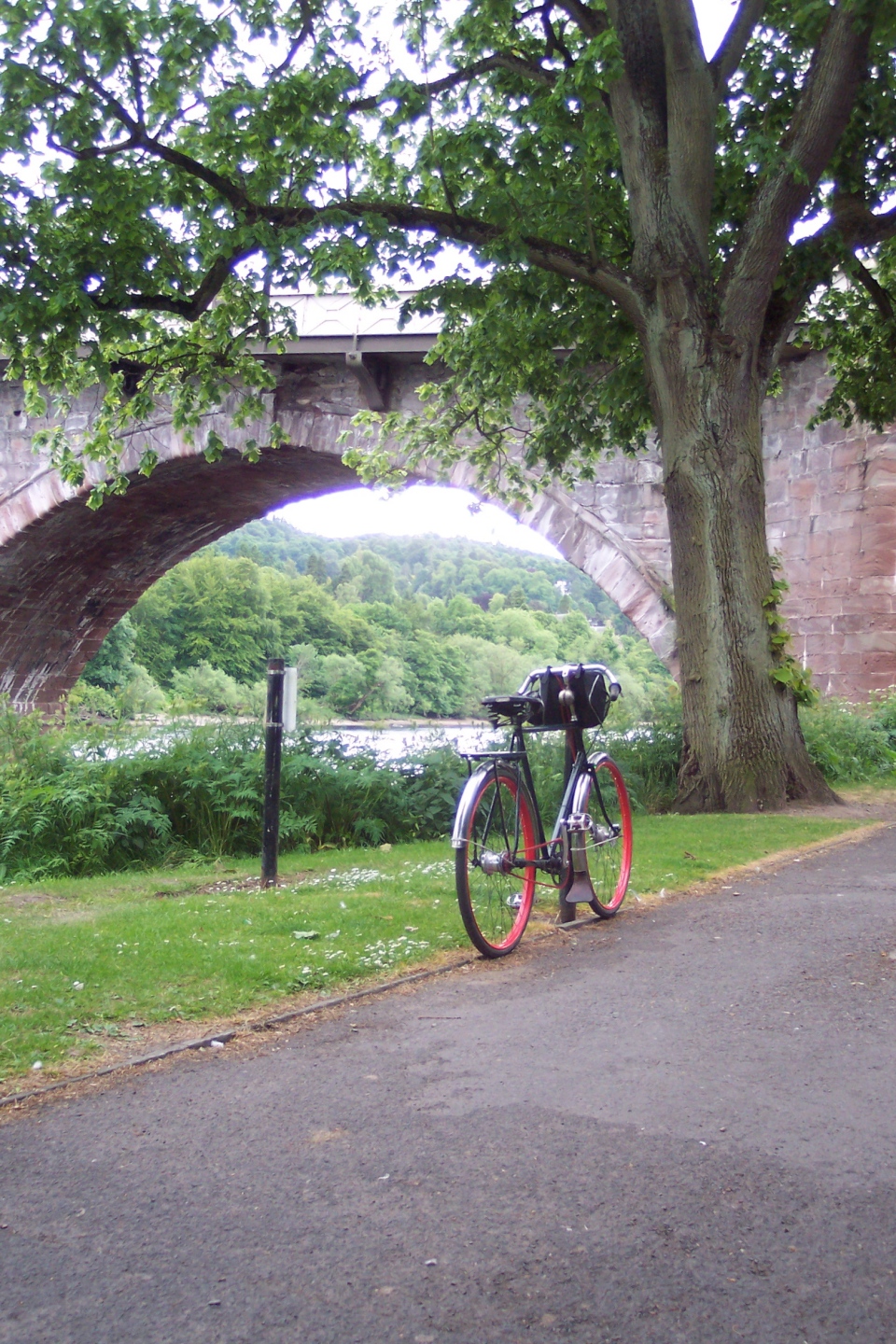Home » 2013 (Page 2)
Yearly Archives: 2013
Saddle Strain – a cautionary tale
The aesthetics of saddles are curious: a visit to eBay shows that old saddles (often well past their prime) command a lot of interest – yet in an age where retro sells, the principal maker of leather saddles (Brooks) is only slowly reviving their classic heritage… chestnut brown leather looks so much better than plain black; oval embossed stamps than angular ones; keyhole slots than plain holes, triple-wrought springs than single strand…. or is that just me? (my wife and I have observed a curious phenomenon – as soon as we get a taste for something at our local supermarket, it vanishes off the shelves, never to be seen again. This is almost unfailing. Perhaps we just have odd tastes).
Anyway, with the building of the Dream Roadster, the question of a suitable saddle soon came up. My beau ideal is the Brooks B90/3 (my daughter and I have two of the last ever made) though I have a soft spot for the B66, but I don’t like grained leather and I prefer keyhole slots. As it happened, I had a never-used B90/3 front spring and frame attachment (much like this, if not identical) plus various odds and ends of old saddles, including a nice Middlemores cover, long since detached from its other components:
One feature I rather liked was the integral eyelets for saddle-bag straps, with metal reinforcements. I had married it to spare B66 rear springs and undercarriage, though you may notice that the gap between the side-rails that takes the saddle clamp is rather wide… mark that.
The side stamp too was pleasing – worn yet retaining detail: Middlemores of Coventry – model B185, think.
And the cover was in good condition,with elegant ventilation slots
(all this took place around Bloomsday, 16th June, which explains the copy of ‘Ulysses’ used as a stand)
from rear 3/4 it looked rather well… I had fitted the Middlemores nose-piece into the narrow gap in the Brooks spring by dint of some judicious hacksaw-work, filing, and hacking off bits of leather – a first-class bodge, in other words.
The original Middlemores saddle had a conventional coil spring at the front (much like a Brooks B73) so that the nose projected beyond it, and was covered with a rather pretty extension to the cover, like a little leather trunk that curled down and round it. This was too wide to fit in the slot in the Brooks spring, and rather than cut it off, I thought to make a feature of it by whipping it to the spring with a spare bit of leather lace.
I am not much of a man for the old Fifty Shades, but I do think a little whipping in the right place looks rather well… (but you can already see the danger signs – look at the strain on that side nose rivet…)
..and here too, at the flare in the flank. The simple act of bolting the top part to the lower frame had put the steel side-rails under a fair bit of tension, and I think you can see that the strain is beginning to tell on the cover
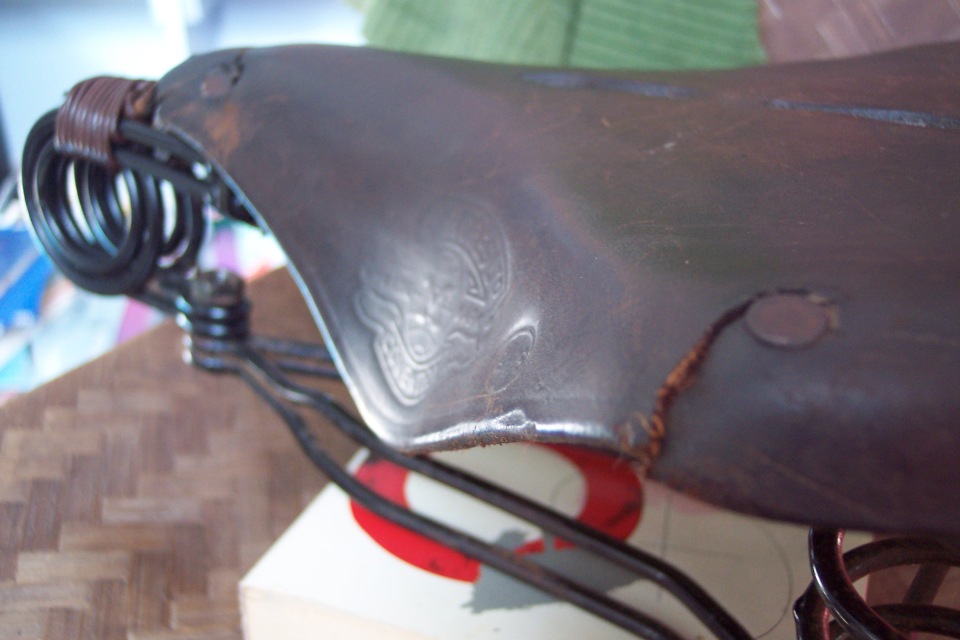
as is particularly evident here – this tear developed considerably as the saddle was assembled, but the final straw was fitting the seat-clamp – this drew the side-rails in much closer and greatly increased the tension, and by the time I had actually fitted the saddle to the bike it had begun to give way at the nose – it plainly would not stand the weight of a rider, so I reluctantly discarded it and substituted the B90/3 from the 1923 Royal Sunbeam.
Yet we learn more from failure than success: I feel I now have a better understanding of the powerful strains and stresses exerted by the saddle chassis on the cover, and how they are exacerbated by the process of assembly and tightening.
‘Hence, loathèd melancholy’ – an evening ride to Elcho Castle & environs
(for the map of this ride, see here)
I am prone to melancholy, usually accompanied by inertia and lethargy, a strong disinclination to do anything. Yet I know that physical activity – a walk or a cycle run – is a sovereign specific against this ailment. Yet you have to force yourself, for all that, and it helps to remember, almost as an article of faith, that it is always worth the effort.
It had been a beautiful day, yet my mood was bleak, lethargic, at one remove from the world (I sometimes think that my mind is like a rambling house in which I get lost: I have the feeling that the place I want to be is close at hand, yet I cannot find the way there). So I made a resolution: I would go out on my bike, the Dream Roadster. The shakedown run had proved satisfactory: what was stopping me?
Nothing, save my own causeless disinclination.
So I forced myself to make a plan, to have something specific to execute: I would go to Elcho Castle, down on the banks of the Tay, a place I had never been, though it was close at hand. I knew it was on a spur off a manageable circular route round Moncreiffe Hill that would bring me back by Bridge of Earn – Pauline and I had walked it a few years back, in training for her Moonwalk. All I had to do was get myself downstairs – gravity would help me there – fetch out the bike, and be on my way.
How many miles would I go? The Sustrans map (‘The Salmon Run‘) suggested 13, but that was coming from the centre of town:
The climb up the Edinburgh Road offers some fine prospects to the North, looking over Perth to the Grampian hills beyond:
How big summer evening skies seem in Scotland!
(Housman – who wrote about ‘those blue remembered hills‘ in ‘A Shropshire lad’ was a terrible melancholic, but he knew it, and could laugh at himself – he enjoyed this parody of his famous work)
The view to the East is nearer, but also very fine – Kinnoull Hill

with its beetling cliffs, which Lord Grey of Kinfauns, seeing a resemblance to those on the Rhine, thought would be adorned by the addition of a picturesque ruined tower, so he built one there in 1829 – you can see it perched on the farther cliff to the right:
though the classic view is this one (from the geograph project) by Val Vannet:
and in fact Elcho Castle, my intended destination, is among the clump of trees on the opposite bank in the middle distance, just where the river meanders to the left. To get there, you take the Rhynd Road, which crosses the M90 to Dundee, offering a fine view of Friarton Bridge:

There are no pictures to cover the section between the bridge over the motorway and Elcho Castle, but that doesn’t mean nothing of note occurred – in fact, I learned (or rather was reminded of) two important truths, and prompted to ask myself a question which I had pondered before. The first truth is that you can’t get something for nothing: this applies as much to the realm of cycle gearing as it does anywhere else.
The motorway bridge is followed by an undulating stretch, then a stiffish climb, and it was there that I realised I was no longer ‘young and eoroch‘ as my mother is wont to say – though that was not the second important truth, more something I should know by this time.
My aim in buying the Mountain Drive had been to extend the epicyclic hub’s fixed range, which in my youth had always struck me as its most frustrating limitation – if you wanted to raise your top gear to blast along on the flat, you were forced to raise your lower gear too; conversely, if you wanted a bottom gear that was ‘a power for the hills’ then you lost top-end turning power. The Mountain Drive offers a spectacular 60% reduction (i.e. each ‘mountain’ gear is 40% of its normal counterpart, or 2.5 times smaller) which effectively gives you two bikes in one – you can set the normal drive to give you a high top end – in my case, with the Spectro P5, 50″ – 58″- 74.6″(direct) – 95″ – 118″ – while keeping a much lower range for hills available at the press of a button: 20″- 23″- 30″ – 38″ – 47″.
So instead of forcing the pedals round as if you were stirring cement as the gradient stiffens against you till eventually you have to stand up to turn them at all (then totter ignominiously and fall off into a ditch) you simply gear down till you meet with such minimal resistance a mouse could turn the pedals (if its legs were long enough and it could ride a bike)*
Simple, eh? well, not quite.
The truth of the matter is that resistance is not the whole story, as anyone who attends a spinning class (my wife, for example) could doubtless have told me: turning pedals fast against little resistance for any length of time takes considerable effort, especially when your legs are as hefty as mine – and when your gear is as low as 20″ (picture a very small unicycle) you do have to turn very fast to get anywhere at all, as the following sum will show:
20 x 3.14 = 62.8″ travelled for each turn of the pedals, so 100 turns will take you some 523′ 4″ further up the hill, so it would take more than ten times that to cover a mile (5280′)
… in other words, 10 minutes at 100 rpm (a pretty brisk rate) will take you not quite a mile, a headlong speed of fewer than six miles per hour. It would take a lot less effort, and not a great deal more time, if you got off and walked – which is what I did.
And that is the second great truth I was reminded of, which is particular to bicycling: never forget that you can always get off and walk. It does not take much effort to push a bicycle uphill, even a laden one (and mine was not). This is perhaps the most-overlooked virtue of the bicycle, that it offers not one, but three modes of transport: in normal mode, as a human-powered vehicle, it will work with you, making highly efficient use of the fuel you, the engine, burn to turn the pedals – you can travel three or even four times faster (or further, if you prefer) than you could on foot, with no greater effort; in downhill or freewheel mode, it will work for you, carrying you at great speed over long distances for no expenditure of effort at all on your part; yet in uphill or walking mode it is still more help than hindrance, since even though you have to push it, it will give you support in return, and carry your bags for you more easily than you could yourself; and your pace will not be significantly slower than if you were just walking, especially festooned with bags.
So don’t underuse your bicycle! walk with it from time to time, as the occasion suits.
And the question all this prompted me to ask myself?
‘How many gears does a man need?’ (which I will deal with in another place) Meantime, I made do with ten.
The spur down to Elcho Castle is well-suited to mode 2 (freewheel) cycling, though it has a spectacular bend in the middle, which I believe delighted my brother Mike in his youth, when he rode a tiger-striped bicycle which was as close as you could get to a motorbike without an engine. I took it rather more cautiously, and was surprised to find myself visited by calvinistic notions (not my persuasion at all) that this breezing downhill was all very well, but it would have to be paid for in the end, as I’d just have to come back up – proof that some rags of melancholy still clung to me.
But in no great time I descended to the river and found myself at the ancestral home of the Wemyss family, which they built around 1560 and lived in till 1929, when the 11th Earl of Wemyss gave it into state care.
It was not open at that hour, though there was a man working at something in the garden. It is a fine sight, it must be said, with the saltire flying against the evening sky; must take a look inside some day.
Once you have climbed back up to Rhynd (yes, more mode 3 pushing) your reward is a fast sweeping descent with a couple of near-right-angle bends, then a long and very straight stretch which includes a measured kilometre and is favoured by the faster members of the cycling fraternity in this airt. But I have to say, for me, straight roads are oppressive, even tedious (unless you are making good speed down a poplar-lined straight in France, at the wheel of a suitable piece of vintage machinery – a Bugatti say, a vintage Bentley, or an Hispano-Suiza; but on a bike they are just a bit too unending for my taste – a kind hill has bends in it; as does an interesting flat road). Fortunately there were other things to see – a glance into the fields had me wondering if I had entered a time-slip and was witnessing the homeward march of an orderly troop of woolly mammoths:
or perhaps giant hedgehogs?
giant purple hedgehogs? ‘Light thickens, and the giant purple hedgehog makes pace to the rooky wood; good things of day begin to droop and drowse…’

However, I found these strange humped entities far from sinister – the opposite, in fact; the sight of them lifted my spirits and dispelled the last shred of melancholy. A little further on, you raise the eponymous Bridge of Earn on the left, somewhat dwarfed by an enormous pylon.
The homeward run is a fine long straight (maybe it’s only narrow straights that oppress? – discuss. Breadth certainly adds character to a road) followed by a fair climb (no need for walking, though) up past the cottages at Craigend that give their name to the complex interchange that connects the motorways to Glasgow, Edinburgh and Dundee, which you pass under before breasting the rise to a fine view of the Fair City, which I did not pause to photograph, but it looks a bit like this, (courtesy of Visit Dunkeld):
And so, by a vicus of recirculation, we come past Elcho Castle and environs back to our own dear home, to find that we have covered a further 11.8 miles, my Dream Roadster and I:
– and my melancholy is banished, for the present. So that initial effort was worth making.
*a limiting proviso, I grant you.
Dream Roadster Shakedown
(for a map of this route, see here)
This started inauspiciously: I set out intending to go over by Callarfountain into Strathearn, a fine rough path that would suit the roadster I thought, preceded by a stiff climb that would test the Mountain Drive (and me).

starting milage on Lucas odometer
I didn’t get far – about a third of the way up Glenlochay Road in bottom gear – legs thrashing furiously – my chain snapped, so I had to turn and ignominiously wheel back to the house. This was one of the moments when a small incident becomes critical: Julius Caesar, landing in Britain, stumbled and measured his length on the shore, an event which must have drawn gasps of dismay from his men, for the Romans were great ones for omens and auguries – surely this was inauspicious? But shrewd Caesar, seizing a handful of soil, stood up and said ‘thus do I claim thee!’ (or some such) and there were smiles all round.
Examining my chain, I saw how easily I could make this an excuse for sticking the bike back in the shed and going off to do something else: it wasn’t meant to be, leave it for another day (I have to say at this point that I have a history of disappointment with the Mountain Drive, which I’ll discuss elsewhere, but which undoubtedly fed into this moment). But closer inspection showed that the chain was not actually broken – it had only sprung a link, no doubt from my own haste and lack of care in putting it on. So I fetched the chain tool, fixed it, and resolved to go by another, less demanding route, just to see how everything ‘shook down’.
I turned downhill and headed into town, visiting a plant shop at Pauline’s request, then off along the Lade, an 800-year-old man-made stream that diverts water from the Almond (a tributary of the Tay) through Perth, originally to provide power for watermills. Now it provides some very pleasant walking or cycling through the town.
I meant to go on to Almondbank, but I missed the turn for the link to National Cycle Route N77 (you have to go over the railway bridge at Tulloch – I went the other way to Dunkeld Road). I crossed over, rode on for a bit, then turned into North Muirton and picked up cycleroute N77 going in the other direction, along the North Inch by the banks of the Tay:
The wall is part of the elaborate flood defences that were put in place in 2001 following a disastrous series of floods in 1990 and 1993. They were tested by another severe flood in 2006. From here, I headed along the North Inch to the Old Bridge, where the floods are marked. The bridge, built by John Smeaton, architect of the Eddystone Lighthouse, was begun in 1766 and completed in 1771, 150 years after its predecessor had been swept away in a flood, so it brought great economic benefit to Perth. It was widened in 1869 – the stone parapets were removed and footpaths built out on iron brackets on each side. Knowing that our town bridge predates the founding of the United States affords me a simple pleasure.
And so home.
The journey – the first I had made in a couple of years – had the desired effect: it was a shakedown for me as well as the bike. I renewed my acquaintance with the joy of riding, experiencing the familiar sense of wondering puzzlement at how I could ever have stopped doing something so pleasurable.
The bicycle survived with no further mishap, though on checking on my return I found the Mountain Drive (which effectively clamps the bottom bracket by screwing into itself) had worked loose, again the result of a hasty lack of care in installing it – still, that’s what shakedown trips are for. I tightened it up and put the bike in the shed, quietly elated.





